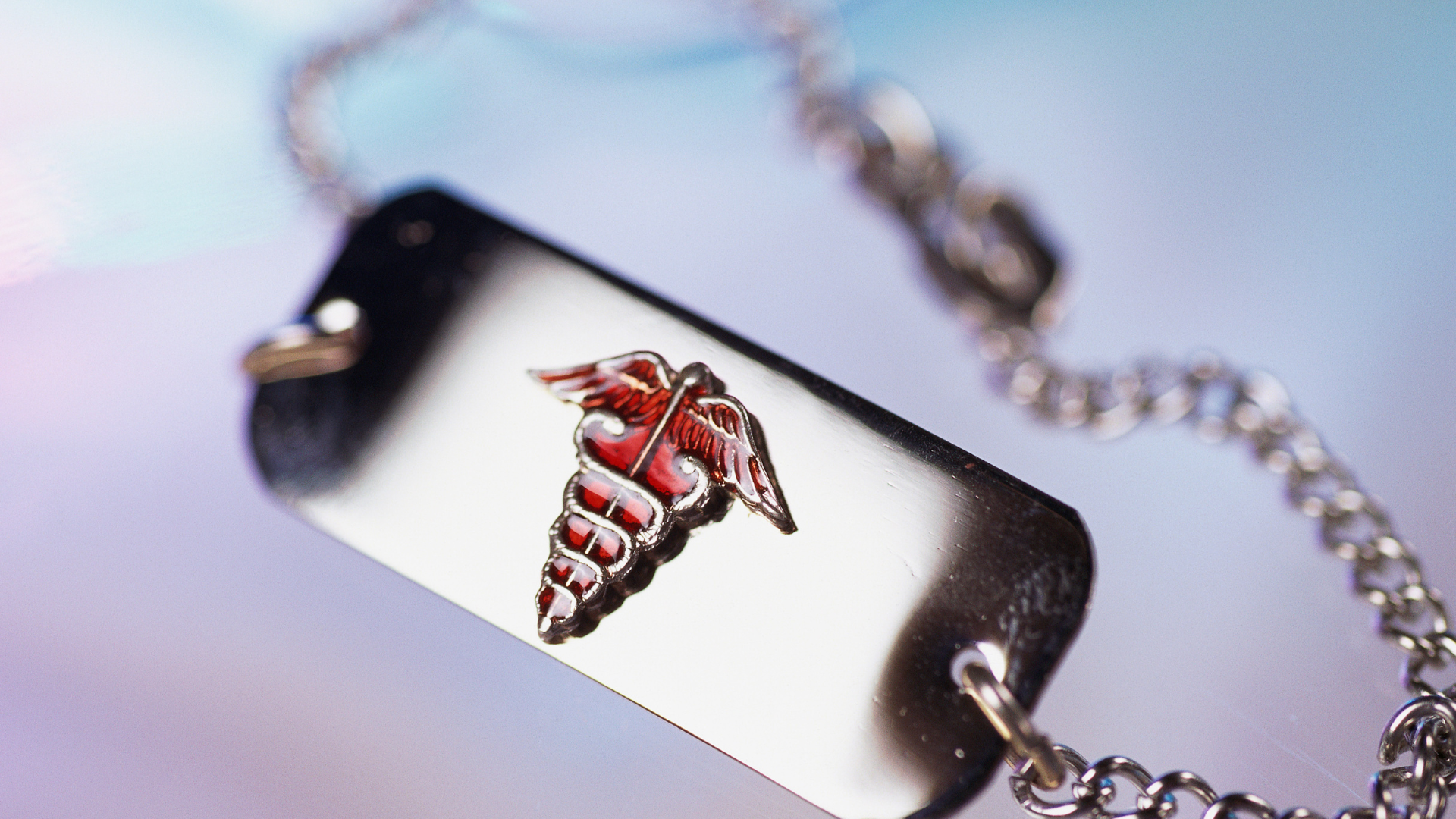Empowering Safety: Medical Alerts for Disabled People
Silver medical alert bracelet with red symbol. Light blue/lavender background. Courtesy, Canva
When my mother sent me off to college, she gifted me with a sterling silver medical alert bracelet with a toggle clasp. Engraved on the tag was my full name, my medical condition, (endometriosis), and my mother’s phone number. It quickly became my favorite piece of jewelry and conversation piece. To me, wearing my medical bracelet was a badge of disability pride and honor; to my mother it was a symbol of safety as she sent her daughter to college 1000 miles from home. Over the years, I have had a dozen variations of the bracelet and adapted my engravings, but I have learned to appreciate the safety I feel when I’m wearing it.
From jewelry to technology, medical alerts have a profound impact on how disabled people stay safe, update loved ones, and express disability pride. I chatted with members of the Diversability Leadership Collective to learn more about their methods for medical alert.
Danielle Connolly | she/her
A lover of travel (especially cruises), Danielle lives with a muscular disease that causes muscle weakness, fatigue, and dysautonomia. She takes numerous medications and believes it’s important to alert someone in case of an emergency. Because the origin of her muscle disease is unknown, she requires the highest level of precautions in emergent cases (like the utilization of anesthesia). To alert others, Danielle wears alert jewelry and uses an app on her electronic devices. Her preference is an app on her phone because she’s able to share the most information. She currently uses the iPhone Health App but is still on the hunt for a more comprehensive app. She worries that many first responders may not search her device for health information. To address the issue, Danielle previously adhered a note to the back of her cellphone that directed readers to her iPhone Health App for additional care information.
Danielle shared that she’s asked first responders how they’re trained to search for medical alert information. Unfortunately, none expressed explicit training in searching information on devices. This left Danielle discouraged. According to the MedicAlert Foundation, first responders are trained to look for this information during a crisis. She wants to better advocate and educate others on this issue but recognizes her own capacity to take on this project. “There are so many issues that I want to educate and advocate for, but there are only so many spoons!... So while I encourage people to have medical alert bracelets…I don't always follow my own advice.”
Katherine Lewis | she/her
Katherine is a lover of travel (specifically national parks) and curling up with a good book. She lives with multiple disabilities including POTS, mobility disabilities, and autoimmune conditions. Each of her disabilities pose different risks to her health and influence her need for a medical alert. Some of her disabilities put her at risk of fainting, falling, and blood loss. Others require medications, many of which could interact with meds given in emergencies.
To prepare for any contraindications, Katherine uses medical alert jewelry, a card in her wallet, and a fall risk device. She prefers a medical alert bracelet with a QR code by MedicAlert which allows medics to access her full medication list, conditions, and surgical history quickly. MedicAlert also offers a wallet card and fall detection enabled watch. Using multiple alerts provides feelings of safety in public and peace of mind when alone. As someone who loves going to the gym, Katherine knows her alerts help make it a safer place.
Katherine includes as much detailed information as possible for her alerts including her name, medical conditions, emergency contact information, medications, health history, allergies, and preferred care methods. Unfortunately, as Danielle alluded, Katherine has had multiple experiences where EMT or medical staff didn't think to look for or ask about medical alerts. She believes that training needs to be improved for first responders as it used to include a protocol for looking at wrists and necks for possible medical alert jewelry/devices. Since this isn’t standard practice everyone, Katherine is sure to let people she’s around know about her alerts and has a service animal who helps add an extra layer of security.
Nico Meyering | he/him
An avid reader of romance novels, Nico utilizes medical alerts to highlight his needs for Congenital Central Hypoventilation Syndrome, which causes respiratory arrest when asleep or sick, cardiac pauses, poor eyesight and temperature control, and other nervous system symptoms. He has a cardiac pacemaker, two breathing pacemakers, and glasses. He prefers to use a MedicAlert necklace and a wallet card with the goal of helping medical personnel care for him if he’s incapacitated.
Nico has found that there are barriers to engraved medical alert jewelry since there are limited characters allowed. For this reason, Nico either does not wear his necklace or feels like he has to prioritize which conditions and medical needs to include.
Thank you to the members of the DLC for your insights. From each of the DLC members’ responses, it is evident that medical alerts have the potential to save lives but also have limitations. In order to feel safer, medical jewelry and devices need better ways to include information for multiple diagnosis and care needs — the QR code option helps improve this gap. Additionally, care professionals should be trained or reminded to continue to check for these items as a way to provide the best care.

